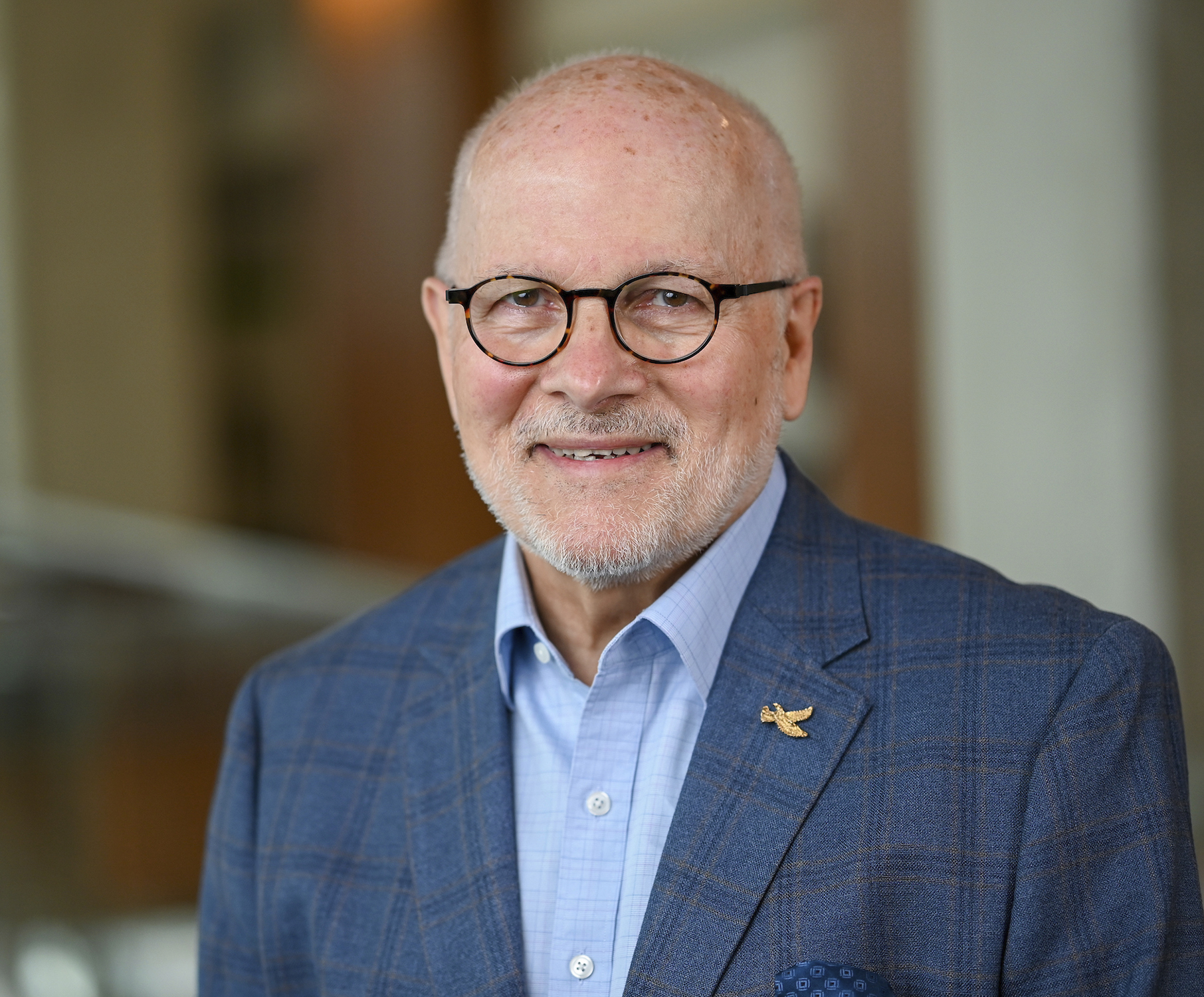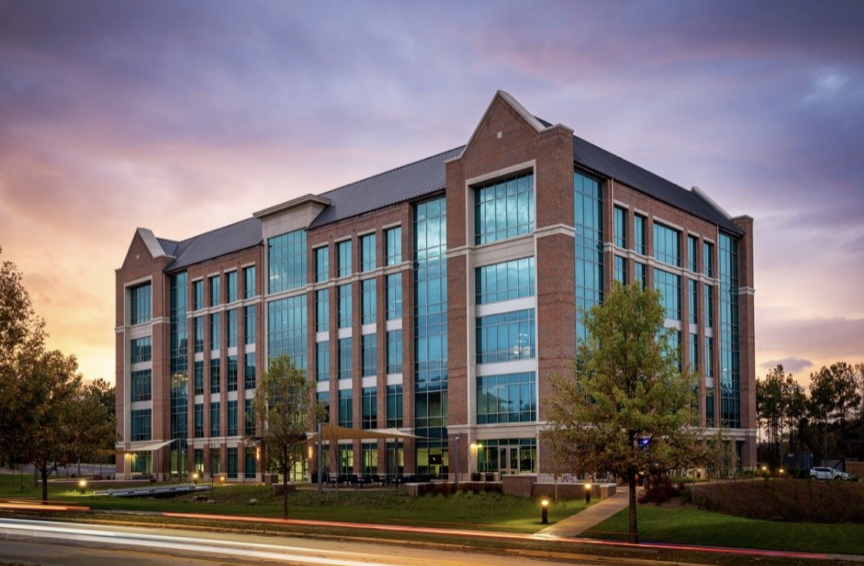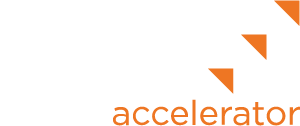Professor-Student Collaboration Drives Auburn Entrepreneurship
An expanding array of experience, expertise and collaborative vision makes business start-up success at Auburn a family affair
By Michael Ares

There’s no better example of how cross-campus collaboration fuels entrepreneurship at Auburn than the story of Perry Sherwood, a rising senior in the Auburn College of Architecture, Design and Construction’s Industrial Design program and an intern at Auburn’s New Venture Accelerator (NVA).
Perry hit the ground running since coming aboard earlier this summer and hasn’t looked back since. She’s already helped AbGlo, a start-up at the NVA, refine their initial fitness monitoring product, “taking it to another level entirely,” according to the company’s founder. Perry’s addition is also helping expand the engagement of Auburn colleges beyond Engineering and Business, which have typically been the primary sources of new business ideas at the NVA.

We recently sat down with Perry, the professor who recommended her, leaders at the NVA, and the founder of AbGlo to find out how the collaborative wheels are turning at the NVA, across the Auburn campus and all the way to California.
“When I first enrolled at Auburn, I went into engineering because I really like problem solving,” says Perry, “but I discovered it wasn’t quite as creative a profession as I had envisioned. Then I remembered something my advisor had said when we first met at the beginning of my freshman year after seeing that I had taken a lot of art classes in high school. ‘You might really like industrial design,’ she remarked, ‘because it combines engineering and artistic creativity.’ So, at the end of my first year in Engineering, I decided to enroll in the summer session of the School of Industrial and Graphic Design and just loved it.”
Perry was having a hard time finding an internship for this summer, with businesses still recovering from the pandemic. “Competition was tough at the opportunities I could find, so I thought I’d just accept a job working as a teacher’s assistant for the industrial design summer program. But then one of my professors, Rusty Lay, came to me and said that the NVA was looking for an intern, and he thought it would be a good opportunity both for me and for them.”

“So, Rusty and I met with Lou Bifano, Ward Swift and Jennifer Nay and at the end of that interview I was offered the job on the spot! Rusty came along not only to support me, but also because he was interested in seeing what the NVA does and how more of his students could get involved.”
“During my first week on the job, Jennifer came to me and said that one of the reasons they hired me was because there was this one company here developing an exercise mat that could use some industrial design help. We set up a Zoom meeting that week and I got to meet AbGlo co-founders Holli Michaels and Marianne Madsen.”

“I remember Holli asking me what my process was, and I thought to myself ‘what process?’ I’ve never had a process, never set my own schedule. We decided that we would meet weekly and I would bring them sketches of their prototype and we would take it from there. I love working with Holli and her team. The work is fascinating. It is the first time I’ve ever worked on something that actually affected another person.”
An Immediate Impact
Perry’s enthusiasm is echoed by Holli, who lives and works full time for a medical device company in Santa Barbara, California while enrolled in the Engineering/Industrial Management Master’s program at the Samuel Ginn College of Engineering at Auburn.

“After competing in Tiger Cage, where we fell just short of making the finals, I noticed that the biggest gap we faced at our company was industrial design,” says Holli. “I’m an engineer, so our product works functionally, but it doesn’t look appealing from an aesthetic design perspective. So, I reached out to Jennifer to see if she knew of anyone I might be able to work with at the NVA to improve our initial prototype with the goal of quoting it with a contract manufacturer and hopefully returning for next year’s Tiger Cage competition.”

“A few weeks later she came back to me and said, ‘I think we have someone for you.’ We were just blown away by what Perry delivered right out of the box. I’ve been in industry for 13 years, primarily in the surgical orthopedic space, and I’ve worked as a design transfer engineer all over the world. Along the way, I’ve collaborated with a lot of different application engineers who can make really great stuff, who know the ergonomics and the human factors that the customer’s looking for. And then Perry comes in. The level of proficiency that she exhibited as an intern compared to some of the design firms we’ve worked with was extraordinary.”

“Here’s an example of Perry delivering on what I considered a stretch goal – I asked her to turn her first set of sketches into a CAD design using a program called SolidWorks. She said she’d worked with that program a little, but not that much. And then at the next meeting she showed up with four stunningly beautiful CAD models of our product.”
She even tweaked a couple of things we hadn’t thought of –absolutely knocked it out of the park. Those CAD files turned into our next prototype, which Marianne is now testing at her gym. All that happened over a single weekend!”
The Industrial Design Connection
Rusty Lay, associate professor and program chair for the School of Industrial and Graphic Design, epitomizes the kind of collaborative effort that brought Perry, Holli, the NVA and the CADC together.

“Jennifer reached out to me as program chair and asked if there were any students who might be able to help out at the NVA as a summer intern, and I told her I could probably come up with a few candidates,” says Rusty. “Perry was one of those who I thought might be a good fit and I knew she was going to be around for the summer. Perry and I visited the NVA and met Lou, Jennifer and Ward. It was my first visit to the NVA and so I knew little about the Accelerator at the time, but I was excited to find out more.”

“They provided us with a tour of the NVA and I was immediately intrigued about what they were doing and how our school could become more closely connected beyond internships – in a more ongoing, sustainable way. Industrial designers are, by nature, problem finders as well as problem solvers. That’s how we train our students to think – to be good problem finders first. Not to just see a problem as has been defined, but to explore further and seek to find the right problem – the root of overarching inefficiencies, failures, problems and pain points. We encourage our students to dive deeper into the stated problem, to discover what might exist below the surface – what could be a deeper problem. That’s part of our role as industrial designers.”

“One of the things I found interesting on the tour was how many different types of businesses there were here. Everything from jewelry and lemonade companies to health, electronics and thin film circuit printing. Just thinking about where industrial design could fit into any of those is really interesting to me. The opportunity for our industrial design students to see so many different types of businesses that they could be connected with locally is inspirational to both them and me. Since our visit, I’ve been asking myself – how can we make this connection stronger?”
Collaboration on Steroids
Lou Bifano, director of the New Venture Accelerator, is excited about expanding the collaboration between Rusty, the School of Industrial and Graphic Design and the NVA, especially after seeing the impact Perry is having on the first project she was asked to work on.

“It’s really been a textbook example of the three skill sets critical to a successful product development cycle – engineering, business and industrial design – coming together,” says Lou. “When I was working in industry, I quickly learned that having a collaborative structure in place that optimizes the unique contributions of these three somewhat diverse groups of people and disciplines makes all the difference between ultimate success or failure.”
“If you don’t have the industrial design folks working with the engineers and the businesspeople – those closest to customer needs – you risk ending up with something that just doesn’t fit. The design doesn’t properly accommodate the electronics, or it is difficult to manufacture, or requires costly custom packaging to ship. In the early days of the IBM PC and PC-compatibles, initial engineering-focused prototypes of the desktop boxes, towers or laptops often used numerous screws and bolts to manufacture that added steps and precious assembly time. The industrial design folks would come in and specify connections that could be snapped together, significantly reducing high-volume production throughput as well as overall cost.”
As important as the collaboration with the School of Industrial and Graphic Design is, Lou is even more excited about the example Rusty is setting for other faculty across the Auburn campus in demonstrating the value of engaging with the NVA. For Lou, it all comes down to the professors and students themselves.
“Our experience has been that when we can engage faculty and students at the grassroots level – professor-to-professor, student-to-student – we generate the highest likelihood that our message of collaborative participation will gain traction. We have close relationships with the Thomas Walter Center at the College of Engineering, for example, but there are other disciplines within Engineering we’d love to work more closely with as well.”

“We expect that will happen most effectively at the professor-to-professor level, and I look forward to working more closely with others at the College of Engineering – Auburn’s largest college and a traditional source of entrepreneurs and start-ups here at the NVA.”
“The same concept applies to students, where peer collaboration through our workshops and pitch competitions is key. This is where students get to work with each other, share ideas, form teams. After all, if a startup is going to be successful, you must have a strong team. Many pitch competitions allow students to sit in on the other teams’ presentations, hear other students’ ideas, and sometimes that leads to individuals from one team working with another team or whole teams joining forces to address a technical, design or market need they both share.”
Opportunities Abound
NVA Entrepreneur-in-Residence Jennifer Nay also points to how Rusty’s passion to expand the relationship between his college and the NVA serves as a striking example of what’s possible at the NVA on many levels.

“I firmly believe that if every professor on campus knew we existed – what we do, how they and their students can participate – it would help them identify when the research being conducted at their college, school or department could be commercialized or form the basis of a real company,” says Jennifer. “I think it would change the way they view their students’ diligent academic work and potential entrepreneurial ideas.”

“One other aspect of what the NVA does that might be overlooked or underappreciated is the role we play through our workshops and pitch competitions in assessing the viability of new venture ideas, where the teams are in their respective journeys, who they need to engage with given the particular stage of their own development. When will they be ready to speak with angel investors? What do they need to do to get to that position? Do they realistically have what it takes – now, let alone over the longer term?”

“You can never tell absolutely, but part of the value we deliver is to explain to aspiring entrepreneurs that natural selection has to take place and that it weeds out the true entrepreneurs from the rest. Maybe you don’t have the work ethic to progress your idea past the concept stage – I call it ‘the fire in the belly.’ If you hit a couple of roadblocks and get discouraged and want to quit, what will you do? The true entrepreneur grinds, figures out ways to make things happen. That’s a tough lesson to learn, but it is best learned earlier rather than later.”
“One final message I want to deliver to aspiring entrepreneurs here at Auburn is that we’re not just about the winners. Yes, the pitch contest winners get the lion’s share of public attention and coverage, but our work with our entrepreneurs doesn’t end simply because they didn’t end up being in the top four according to our panel of judges. We have many examples of companies that don’t win going on to form successful businesses. We think AbGlo just might be one of those.”
Visibility, Visibility, Visibility
“You can’t impart collaboration without being visible to all those in the entrepreneurial sphere of influence,” says Ward Swift, Entrepreneur-in-Residence and Communications Director at the NVA. “From the students and faculty who have promising ideas to investors looking for the next potential success story, a large part of what we do at the NVA is to shine a light on the wealth of opportunity here at Auburn. And we have a lot of help in doing that from alumni and local businesspeople who generously donate their time, experience, and expertise to our mission.”

“One area in which we are looking to expand our visibility, as Lou and Jennifer mention, is among the hundreds of professors right here at Auburn. Whether it is in the College of Agriculture, Education, Forestry, Human Sciences, Liberal Arts, Nursing, Pharmacy, Sciences and Mathematics, or Veterinary Medicine, our Auburn faculty represent tremendous potential in identifying avenues for new business formation. They know their areas of research and scholarship and the students who stand out with the potential to become future entrepreneurs.”
“We encourage any professor in any college on campus to take a look at what we have to offer them, their programs and their students – just like Rusty did – and to come in for a tour of our facilities and entrepreneur-focused initiatives. The ways in which we at the NVA can collaborate to add value to you and your students are virtually unlimited.”
To schedule a tour or meeting with the NVA, please contact Lou Bifano at loubifano@auburn.edu.
